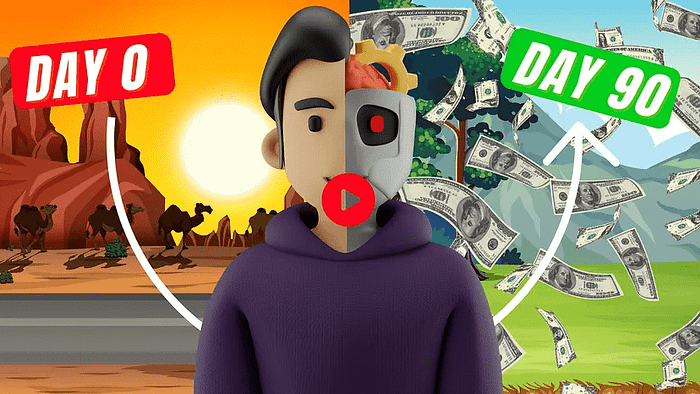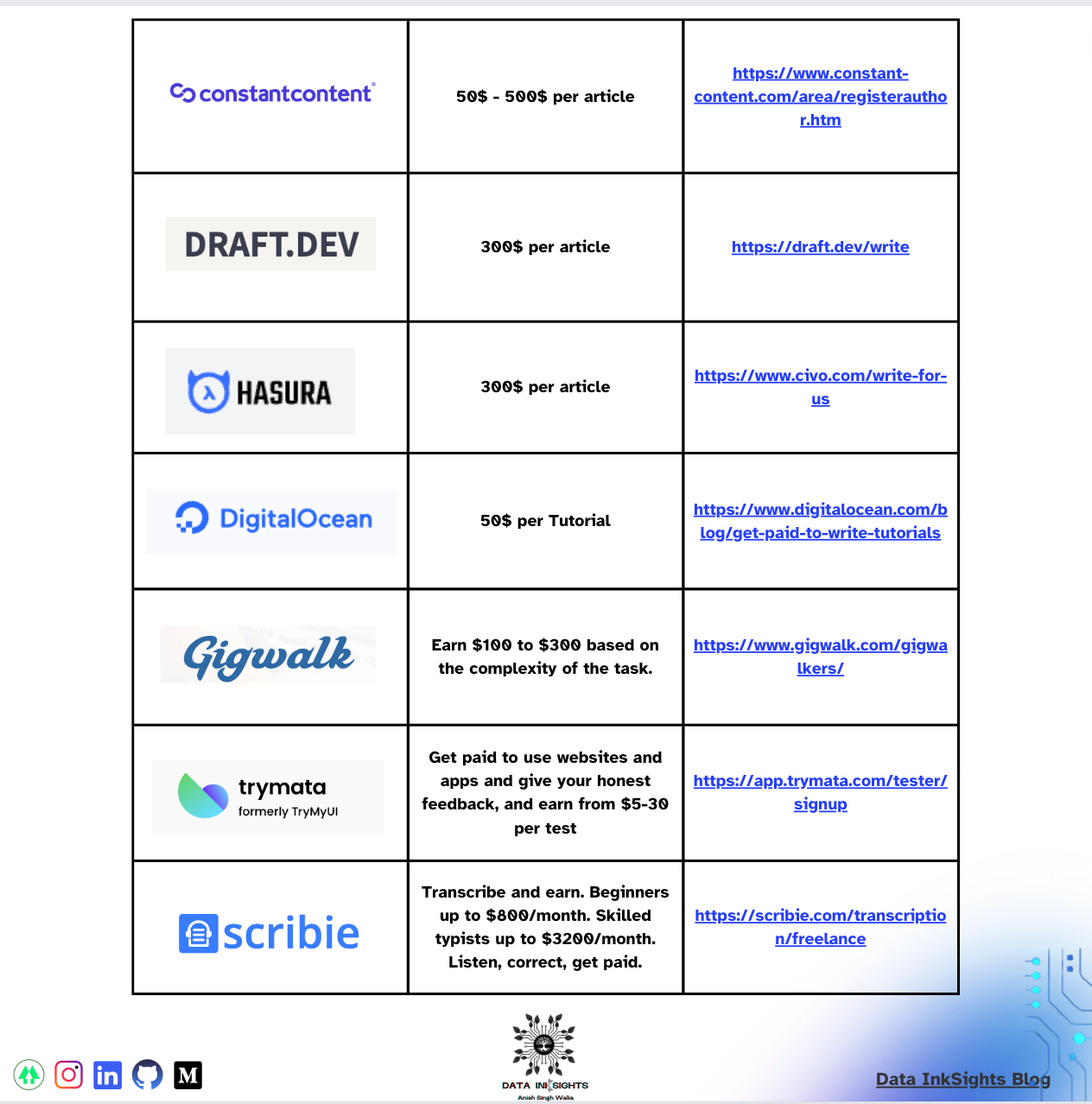How to Create GPTs that SELL!
How creating your own AI with GPT-3 is now possible for anyone, even with zero coding skills. This step-by-step guide will show you how.
Building an AI assistant from scratch used to be an extremely difficult task reserved only for those with advanced computer science and coding skills. But the release of large language models like GPT-3 by Anthropic has completely changed the game. Now, anyone can create their own intelligent chatbot even with zero coding experience.
In this guide, I’ll walk you through the exact 7-step process I used to build my own custom AI assistant called “Claude” on Anthropic’s platform in just a few hours.
We strongly recommend that you check out our guide on how to take advantage of AI in today’s passive income economy.
Why Build Your Own AI Assistant?
Before we dive in, let’s first go over some of the key benefits of having your own AI chatbot:
- Customize it for your specific needs — Generic assistants like Siri and Alexa only have limited capabilities. But with GPT-3, you can create an AI tailored to your unique requirements.
- Make money from it — Anthropic has announced a revenue sharing program in Q1 2024. Based on usage of your published AI, you’ll earn payouts.
- Stand out from the crowd — There are already millions of public GPTs. By using my 7-step formula, yours will be uniquely engaging.
- It’s super fun! — I won’t lie, it’s incredibly cool to create your own intelligent assistant from scratch. It makes you feel like Tony Stark from Iron Man.
Now that you’re excited about the possibilities, let’s get into the step-by-step guide…
Step 1: Find Untapped Idea Based on Existing Problems
The first step is coming up with a purpose for your AI assistant. You need an idea that solves a real problem people have.
Luckily, Anthropic’s GPT store organizes public assistants into 7 main categories:
- Writing
- Productivity
- Research & Analysis
- Programming
- Education
- Lifestyle
We want to come up with an idea that fits into one of these popular categories.
Here’s a simple prompt I use to generate initial ideas:
Come up with 15 unique problems or needs people have for each of the 7 GPT store categories below. Be as creative and insightful as possible:
- Writing
- Productivity
- Research & Analysis
- Programming
- Education
- Lifestyle
After entering this into Claude, he generated over 100 thought-provoking ideas across all the categories.
For my assistant, I decided to focus on the “Productivity” category. Specifically, I chose the idea of a “Focus Enhancer” that provides tips to improve concentration.
The key is picking an idea you’re genuinely interested in and passionate about. Having domain expertise will help you create better instructions later.
Step 2: Create Unique Solutions to the Problem
Now that we’ve identified the problem to solve, the next step is coming up with the unique “secret sauce” — the special guidance and insights our AI will provide.
To generate creative solutions tailored to our productivity/focus enhancer idea, I used this prompt:
*Please provide 10 unique and helpful solutions for a hypothetical GPT assistant called [Focus Enhancer] that offers tips to improve concentration. Make the solutions detailed yet practical and actionable. Structure each one as follows:
- Solution Name: [1–3 word name summarizing solution]
- Solution Description: [2–3 sentence summary of key idea]
- Sample Guidance: [3–5 bullet points demonstrating how assistant would guide user]
[Focus Enhancer] solutions:*
- Solution Name:
- Solution Description:
- Sample Guidance:
- Bullet 1
- Bullet 2
- Bullet 3
Claude came up with 10 awesome solutions, ranging from music selection to dietary tips to better goal-setting.
I decided to focus on the “Stress and Anxiety Management Tools” solution, since managing stress improves concentration.
The key is staying focused on your specific problem, while leveraging Claude’s creativity to uncover solutions you may not have considered.
Step 3: Generate Instructions for the Solution
Now we need to transform the high-level solution into step-by-step guidance and instructions that our assistant will actually follow.
This is where Claude really starts doing the heavy lifting.
I gave him this detailed prompt to generate the instructions:
*Please provide a complete set of conversational instructions for a GPT assistant named [Stress and Anxiety Management Tools] that offers tools and techniques for managing stress and anxiety, such as breathing exercises, stress-reduction routines, and work/life balance advice in order to improve concentration.
Make the instructions empathetic and conversational, like you are guiding a friend. Include an introduction greeting, assessing the user’s stress levels, providing tailored solutions, and wrapping up with a conclusion.
Structure the full instructions like this:
- Initial Greeting
- Assess User’s Stress Level
- Recommend Solutions Based on Level
- Breathing Exercises for Mild Stress
- Time Management Tips for Moderate Stress
- Cognitive Reframing for Severe Stress
- Help User Practice Solutions
- Ask if Any Additional Support Needed
- Session Conclusion
Here is an example introduction greeting:
Hi there! I’m [assistant name], your ally against anxiety. It looks like you’re feeling stressed — but don’t worry, I’m here to help provide some proven techniques to get your stress under control and improve your ability to concentrate. Let’s start by having you assess your current stress levels on a scale of 1–10 so I can better understand what you’re going through.
[Stress and Anxiety Management Tools] Instructions:
With this detailed prompt, Claude generated a full set of empathetic instructions customized specifically for managing stress to improve focus.
I then reviewed the instructions, making slight tweaks so they perfectly matched my vision for the assistant’s personality and approach.
Step 4: Create a Catchy Name, Description and Profile Picture
Now it’s time to give our AI assistant a name and brand identity.
This prompt does the trick:
*Please generate 10 creative yet professional name ideas for my AI assistant that provides tools and techniques for managing stress and anxiety to improve concentration and focus.
Also generate 10 short, appealing one sentence descriptions of what the assistant does.
Finally, provide 3 sample profile pictures that visually convey relaxation and focus.*
Here are some of the great options Claude came up with:
Names:
- ClearMind
- Serenity
- The Zen Den
- Focus Guru
- Concentration Coach
Descriptions:
- Your personal guide to taming a busy mind and improving focus.
- Science-backed techniques to get centered and hone concentration.
Profile Pictures: Claude provided 3 relaxing nature photos that perfectly captured the vibe I was going for.
I ultimately chose the name “Serenity”, with the description “Science-backed techniques to get centered and hone concentration.”
Step 5: Test and Refine the Assistant
Now we have all the pieces — problem, solution, instructions, branding. It’s time to test Serenity out to make sure she works as intended.
Anthropic provides a “Try It Out” testing tool that lets you simulate conversations with your assistant before publishing.
I tested over 20 different conversation scenarios, tweaking Serenity’s instructions based on her responses.
Some examples of refinements:
- Added more validation when users share stress levels
- Improved transitions between instruction steps
- Expanded knowledge on cognitive reframing techniques
Testing is crucial to smooth out any kinks and validate your AI solves the problem effectively.
Step 6: Publish Your Assistant
Once satisfied with Serenity after testing her extensively, it was finally time to publish to the Anthropic GPT store!
This simply involves:
- Verifying your builder profile with name and website details
- Choosing one of the 7 categories — I selected Productivity
- Flipping the switch from Private to Public
That’s it! Serenity was now available for anyone in the world to chat with on Anthropic’s platform.
It was such an amazing feeling to bring her to life after conceptualizing, building, and refining her for hours.
Step 7: Get Initial Users to Boost Discovery
With over 3 million assistants already published, standing out from the crowd is challenging.
You need to demonstrate your assistant provides value to real users in order for Anthropic’s algorithms to recommend it more widely.
Here are a few tips to get initial users:
- Share Serenity on your social channels
- Ask friends and family to try her out
- Post in communities related to your assistant’s purpose
Don’t worry about annoying people — genuine feedback will help improve Serenity. Plus, Anthropic cares more about engagement than number of users at this point.
Even 50–100 initial users you directly drive can give your assistant a huge leg up over the masses publishing but not promoting their AIs.
Additional Tips to Make Your Assistant Stand Out
While the 7 steps above cover the core process, here are some bonus tips:
Add “Conversation Starters”
I always include quick conversation starter buttons like “I’m feeling stressed” that trigger Serenity’s guided protocols. It makes engaging with your assistant much simpler.
Upload Relevant Knowledge
You can boost your assistant’s expertise by uploading documents, PDFs, and other data sources for it to reference. For Serenity, I uploaded guides on cognitive behavioral therapy techniques.
Add Integrations with APIs
If you’re comfortable with basic API code, you can connect your assistant to outside applications. For example, Serenity could integrate with a wearable device to monitor heart rate.
Collaborate with Others
Having a group to share ideas and give feedback makes building AIs much easier. I’m part of an online community of fellow AI enthusiasts where we help each other bring our creations to life.
Refine, Refine, Refine
Creating an AI assistant is an iterative process. Be prepared to regularly tweak instructions and test conversations until your assistant truly shines.
Enjoy Bringing Your Own AI to Life!
And that’s a wrap! As you can see, anyone can now leverage large language models like GPT-3 to build their own intelligent assistants from scratch — no advanced technical skills required.
I hope this guide gave you a comprehensive yet easy-to-follow framework for developing a unique AI that solves real problems for people. Let your creativity run wild!
It’s incredibly rewarding to bring an AI like Serenity to life through this step-by-step process. And having your own customized assistant serves as a funparty trick to impress your friends too!
If you end up using this process to build your own AI, I’d love to hear about your experience and see what you create. Feel free to reach out.
And if you want to join a community of like-minded AI enthusiasts on this journey, check out the link below. Wishing you the best of luck in your AI creation adventures! We strongly recommend that you check out our guide on how to take advantage of AI in today’s passive income economy.
We strongly recommend that you check out our guide on how to take advantage of AI in today’s passive income economy.
54
Gpt
Make Money Online
AI
ChatGPT
Artificial Intelligence
54 Follow
Follow
Written by Money Tent
3.1K Followers
Money Tent offers cutting-edge online money-making strategies for beginners to leverage before they lose their appeal. 🤑 https://highticketaisystem.gr8.com/
More from Money Tent

 Money Tent
Money Tent
12 Amazing AI Tools That Are Surprisingly FREE!
Navigating the Sea of AI Tools with Future Tools
4 min read
·
Dec 15, 2023
966
14
 Money Tent
Money Tent
Top 5 AI Tools That Are BETTER Than ChatGPT, But Nobody is Using Them
Exploring Lesser-Known Alternatives Transforming the Tech Landscape
4 min read
·
Dec 24, 2023
871
11
 Money Tent
Money Tent
Quick $65/Hour Simple AI Side Hustle For Beginners to Make Money Online In 2024
How I Make $50-$65 Per Hour Online Without Selling Anything
5 min read
·
Jan 4
965
20
 Money Tent
Money Tent
8 Best AI Tools for Research in 2024
Navigating the Cutting Edge of Research with AI Assistants
5 min read
·
Dec 8, 2023
325
6
Recommended from Medium

 Hasan Aboul Hasan
Hasan Aboul Hasan
How To Create AI Tools in Minutes!
A simple script. You just need to copy, tweak a little bit, and then you can build almost any AI tool you want!
6 min read
·
5 days ago
1K
12
 Anish Singh Walia
Anish Singh Walia
in
𝐀𝐈 𝐦𝐨𝐧𝐤𝐬.𝐢𝐨
7 Secret Websites That Pay You to Work from Anywhere in 2024 — Part 1
Looking for websites that pay you to work from anywhere? Check out these 7 secret websites that offer remote work opportunities in 2024.
7 min read
·
5 days ago
437
9
Lists

 What is ChatGPT?9 stories
What is ChatGPT?9 stories
·
273
saves

 ChatGPT23 stories
ChatGPT23 stories
·
393
saves

 ChatGPT prompts34 stories
ChatGPT prompts34 stories
·
972
saves

 The New Chatbots: ChatGPT, Bard, and Beyond12 stories
The New Chatbots: ChatGPT, Bard, and Beyond12 stories
·
270
saves
 The PyCoach
The PyCoach
in
Artificial Corner
OpenAI Just Released The GPT Store. Here’s How To Use It And Make Money With Your GPT
Learn how to publish your GPT to the store and monetize it.
·
5 min read
·
4 days ago
1K
10
Revaz Gh. (MaestroError)
in
Community-Driven AI
How to Find the Best Custom GPT for You: The Guide
Choosing the Right Custom GPT for Your Unique Needs
4 min read
·
5 days ago
67 Luke Skyward
Luke Skyward
in
AI Creators
How I Made AI to Write (Mega)Prompts For Me
The Ultimate Guide to ChatGPT Meta-Prompting
·
7 min read
·
Jan 5
760
8 Financeable
Financeable
4 EASIEST AI Side Hustles To Start In 2024 (Work From Home)
Here are the 4 of the best AI side hustles you can do from home. Either as full-time work from home businesses or a side hustle on top of…
13 min read
·
Jan 8
709
25





































